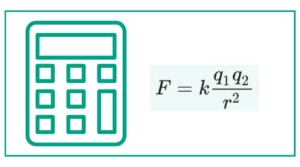Displacement Calculator
You can use this displacement calculator to calculate the displacement using constant velocity or acceleration.
Enter the time in seconds and average velocity (m/s) to calculate the displacement.
s=vt
Enter the time in seconds, initial velocity, and final velocity to determine the displacement. If you know the acceleration, you can leave the velocity fields blank and the acceleration value in m/s² to find the displacement.
S = ut + ½ at2
In case you don’t know, a change in position is called displacement.

You might want to figure out the Gravitational force or might want to determine momentum.
What is Displacement?
Displacement is a vector quantity that measures the shortest distance between an object’s initial and final positions. Unlike distance, which describes the total path length an object travels, displacement only considers the straight-line distance and direction from the starting point to the endpoint. This distinction is crucial in physics and engineering calculations.
Key Characteristics of Displacement
- Vector quantity: Displacement has both magnitude and direction.
- Shortest path: It represents the straight-line distance between two points.
- Can be positive or negative: The sign indicates direction relative to a reference point.
- May be zero: If an object returns to its starting point, the displacement is zero, even if it traveled a significant distance.
The Displacement Calculator: A Valuable Tool
A displacement calculator is an online tool designed to compute displacement quickly and accurately. It takes input values such as time, velocity, or position coordinates and applies the appropriate formulas to determine the displacement of an object. This calculator streamlines the process, reducing the likelihood of errors in manual calculations.
Benefits of Using a Displacement Calculator
- Time-saving: Performs complex calculations instantly.
- Accuracy: Minimizes human error in computation.
- Versatility: Handles various displacement scenarios and formulas.
- Educational value: Helps users understand the relationship between displacement and other physical quantities.
How to Use a Displacement Calculator
Using a displacement calculator typically involves the following steps:
- Choose the appropriate calculation method based on the available information.
- Enter the known values into the designated input fields.
- Click the “Calculate” button to obtain the result.
- Review the calculated displacement, usually displayed in meters (m) or another specified unit.
Example 1: Calculating Displacement with Constant Velocity
Let’s consider a scenario where an object travels at a constant velocity:
- Time (t) = 5 seconds
- Average velocity (v) = 3 m/s
To calculate the displacement:
- Enter the time value: 5
- Enter the average velocity: 3
- Click “Calculate Displacement”
The calculator will apply the formula: Displacement (d) = v × t
Result: Displacement (d) = 3 m/s × 5 s = 15 m
In this case, the object has moved 15 meters from its starting point in the direction of its velocity.
Example 2: Displacement with Initial and Final Velocities
Now, let’s examine a situation where an object accelerates:
- Time (t) = 10 seconds
- Initial velocity (v₀) = 2 m/s
- Final velocity (v) = 8 m/s
To calculate the displacement:
- Enter the time value: 10
- Enter the initial velocity: 2
- Enter the final velocity: 8
- Click “Calculate Displacement”
The calculator will use the formula: Displacement (d) = ½(v₀ + v) × t
Result: Displacement (d) = ½(2 m/s + 8 m/s) × 10 s = 50 m
The object has moved 50 meters from its starting point during the 10-second interval.
Understanding the Displacement Formula
The displacement formula varies depending on the available information and the nature of the motion. Here are some common formulas used in displacement calculations:
- For constant velocity: d = v × t
Where d is displacement, v is velocity, and t is time. - For accelerated motion: d = v₀t + ½at²
Where v₀ is initial velocity, a is acceleration, and t is time. - Using initial and final velocities: d = ½(v₀ + v)t
Where v₀ is initial velocity, v is final velocity, and t is time. - Using position coordinates: d = √[(x₂ – x₁)² + (y₂ – y₁)²]
Where (x₁, y₁) is the initial position and (x₂, y₂) is the final position.
A displacement calculator typically incorporates these formulas to provide accurate results based on the input values.
Applications of Displacement Calculations
Understanding and calculating displacement is crucial in various fields:
- Physics: Analyzing motion, force, and energy in mechanical systems.
- Engineering: Designing transportation systems, robotics, and machinery.
- Sports science: Studying athlete performance and movement efficiency.
- Environmental science: Tracking particle movement in fluids or gases.
- Navigation: Determining travel distances and routes in GPS systems.
Limitations and Considerations
While displacement calculators are powerful tools, it’s important to be aware of their limitations:
- Simplified models: Most calculators assume ideal conditions and may not account for real-world factors like friction or air resistance.
- Linear motion: Basic displacement calculators often focus on straight-line motion and may not handle complex trajectories.
- Unit consistency: Users must ensure all input values are in compatible units to avoid errors.
- Interpretation: The calculator provides numerical results, but users must interpret the meaning and implications of the displacement in context.
Enhancing Your Understanding of Displacement
To deepen your grasp of displacement and related concepts, consider the following:
- Practice problems: Solve various displacement scenarios to build intuition.
- Visualizations: Use graphs or diagrams to represent displacement vectors.
- Real-world applications: Identify everyday examples of displacement in your environment.
- Advanced concepts: Explore related topics like velocity, acceleration, and motion in multiple dimensions.

References
- Bowden, J., Dall’Alba, G., Martin, E., Laurillard, D., Marton, F., Masters, G., … & Walsh, E. (1992). Displacement, velocity, and frames of reference: Phenomenographic studies of students’ understanding and some implications for teaching and assessment. American Journal of Physics, 60(3), 262-269.
- study.com/learn/lesson/distance-displacement-physics-overview-examples.html. (n.d.). study.com/learn/lesson/distance-displacement-physics-overview-examples.html





